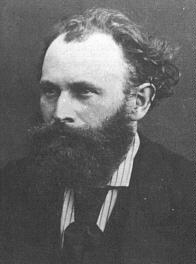

Manet - Dejeuner sur l'herbe art
Manet - Olympia art
Manet - Bar at the Folies Bergères
Manet - Dejeuner sur l'herbe
Manet - Olympia
Manet - Bar at the
Folies Bergères
Manet - Dejeuner sur
l'herbe
Manet - Olympia
Manet - Bar at the Folies Bergères
EDOUARD MANET 1832-1883
MANET
Manet/Velázquez
In 1804, at the dawn of the French Empire, there were no more than a handful
of Spanish paintings in public collections in France. During the course of
the nineteenth century, however, French collectors and museums assembled substantial
holdings of works by such Spanish masters as Velázquez, El Greco, Zurbarán,
Murillo, and Goya. At the same time, French writers and artists—among
them Delacroix, Géricault, Courbet, Millet, Bonnat, Degas, and, especially,
Manet—came to understand, appreciate, and even emulate Spanish painting
of the Golden Age.
This beautiful book features over 150 works by French and Spanish artists,
charting the development of this cultural influence and mapping a fascinating
shift in the paradigm of painting: from Idealism to Realism, from Italy to
Spain, from Renaissance to Baroque. Above all, it vividly demonstrates how
direct contact with Spanish painting fired the imagination of nineteenth-century
French artists and brought about the triumph of Realism in the 1860s, and
with it a foundation for modern art. American artists of the second half of
the nineteenth century often turned to Europe for training and inspiration.
Whistler, Cassatt, Eakins, Chase, and Sargent all traveled to Spain for firsthand
exposure to its artistic heritage and experienced the thrill of discovering
Spanish painting. Also included in this volume are works by American artists
that clearly reflect the pervasive influence of and taste for Spanish painting.
From the Publisher
This book is published in conjunction with exhibitions held at the Musée
d’Orsay, Paris, from September 16, 2002 to January 6, 2003 and at The
Metropolitan Museum of Art, New York, from March 4 to June 8, 2003. Published
in association with The Metropolitan Museum of Art.
Please click on the link for more information about this beautiful Book
Thanks to our sponsors
Art web site art market
GeigaMedia Website Development
London Airport uk-taxi
Jewellers since 1790
Jewellery
website
Cocot Lingerie
exceldocklands
Omega watches
Berkeleys